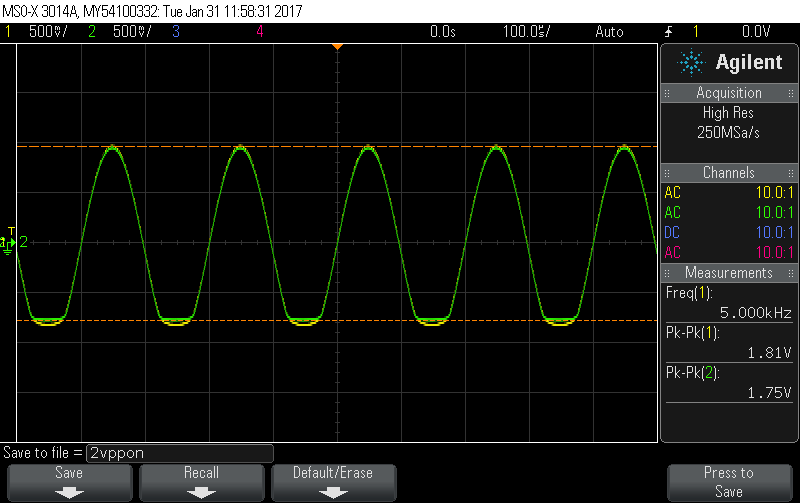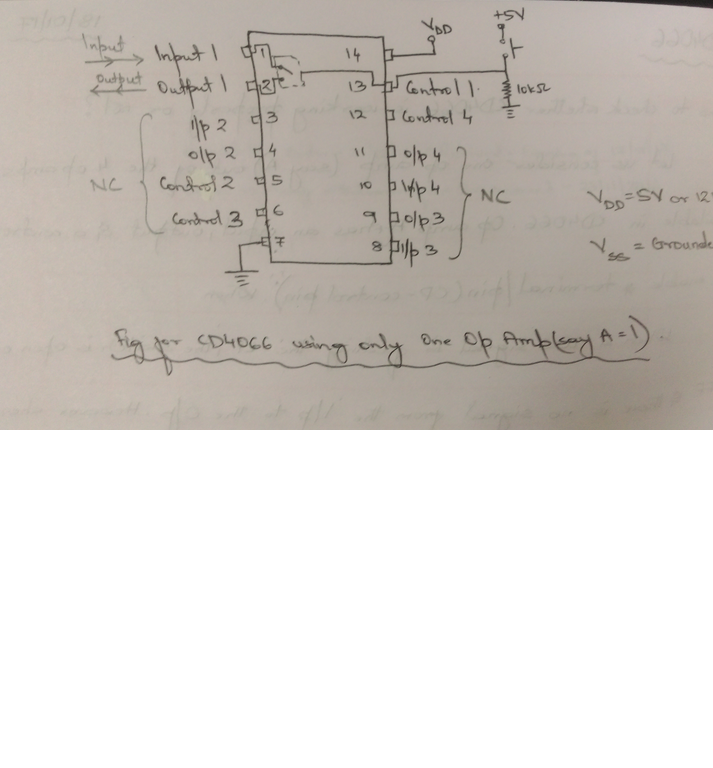Other Parts Discussed in Thread: CD54HC4316
Hi Team,
The customer is using CD4066B.
The first waveform: 1vppoff - This represents the i/p and o/p signal with 1vpp input amplitude and the control pin=OFF.
The second waveform: 1vppon - This represents the i/p and o/p signal with 1vpp input amplitude and the control pin=ON.
The third waveform: 2vppoff - This represents the i/p and o/p signal with 2vpp input amplitude and the control pin=OFF.
The fourth waveform :2vppon - This represents the i/p and o/p signal with 2vpp input amplitude and the control pin=ON.
Case2.: If the input is high and the control is low, then output should be low right(i.e no signal at the output whatever the input voltage is)? Here we see that when the input is high and the output is low, we see that instead of giving a low output (~0 V), the output shows some signal around 450mVpp for 2Vpp Input voltage.
Best Wishes,
Mickey Zhang
Asia Customer Support Center
Texas Instruments







